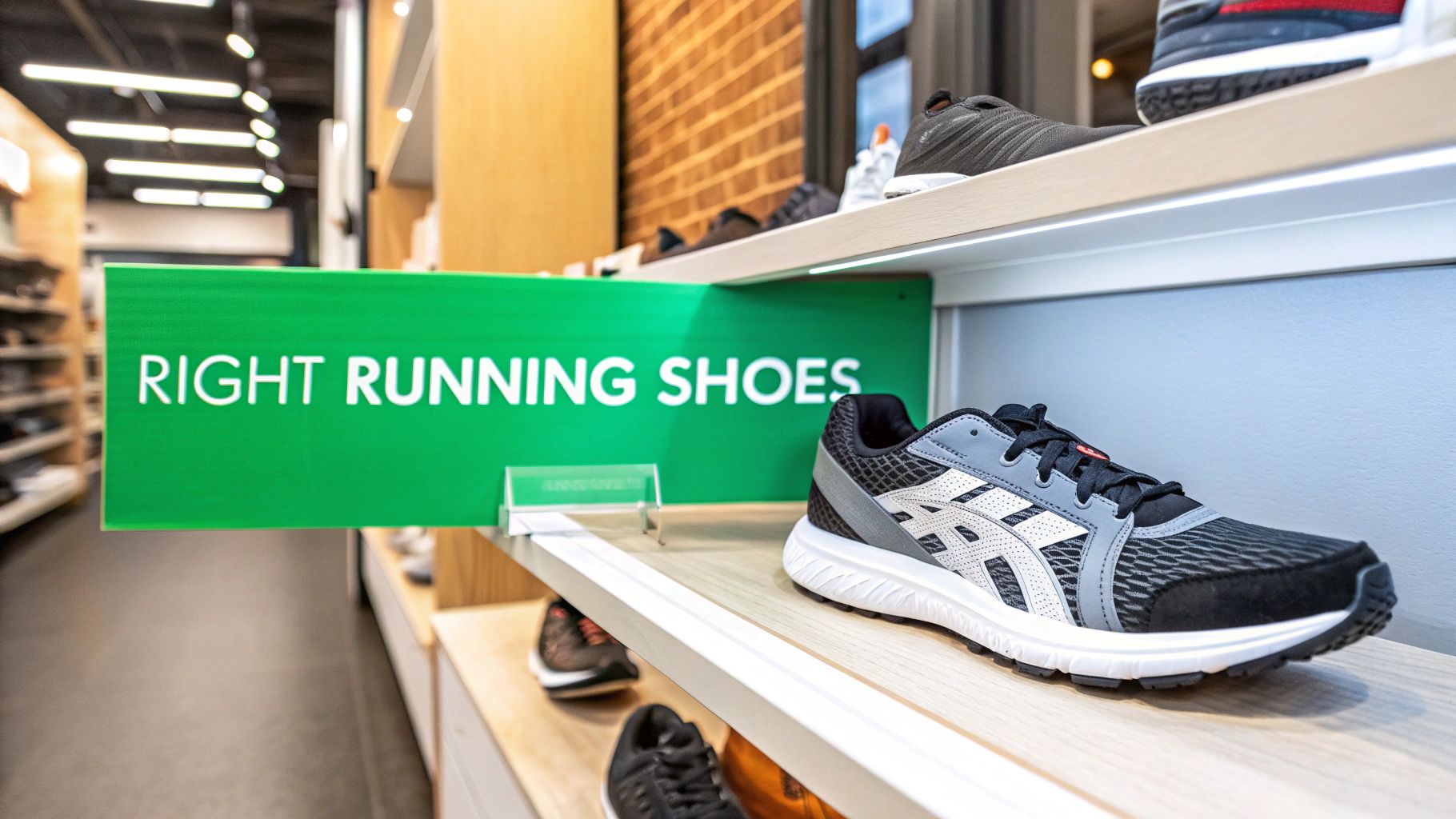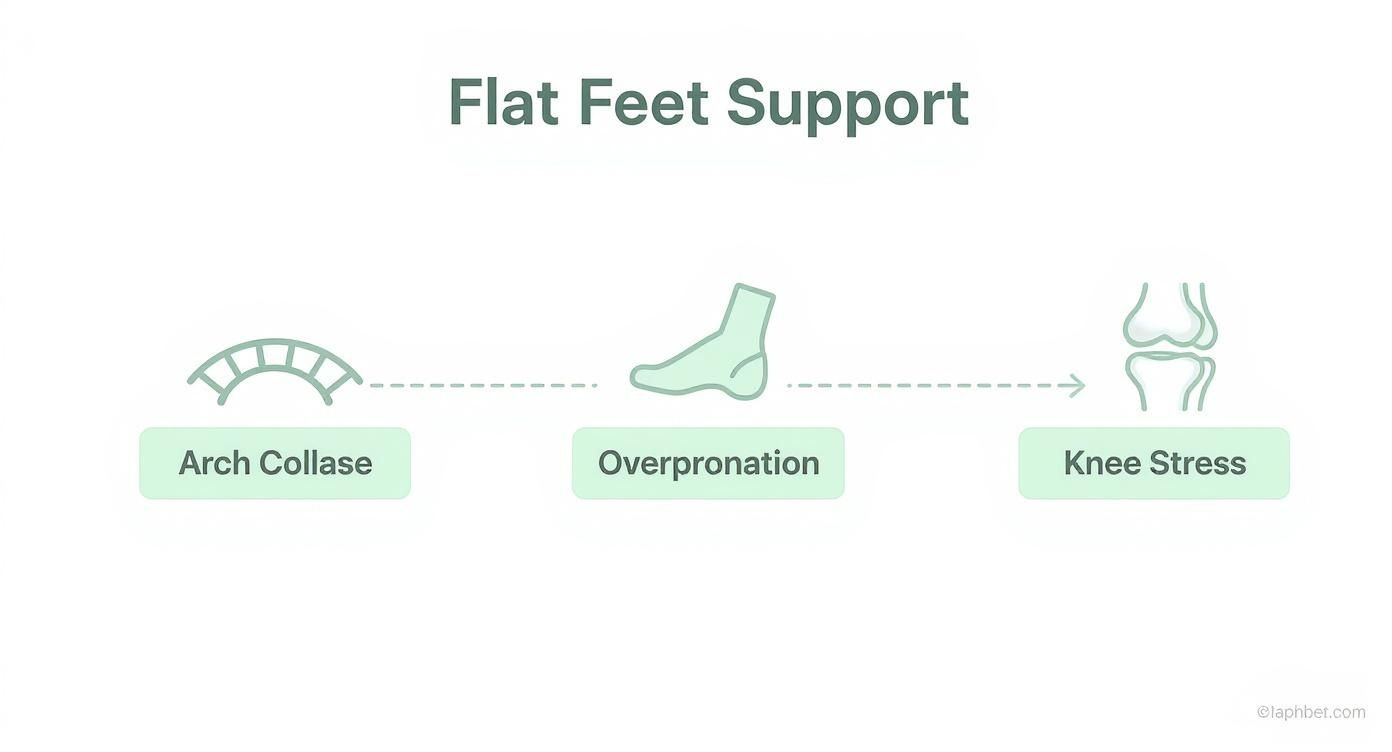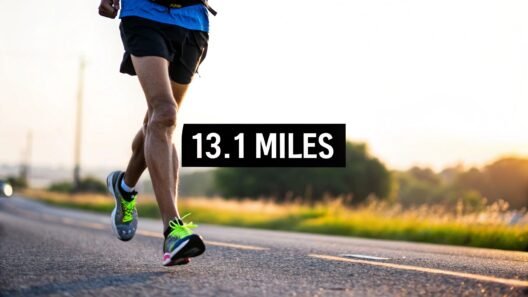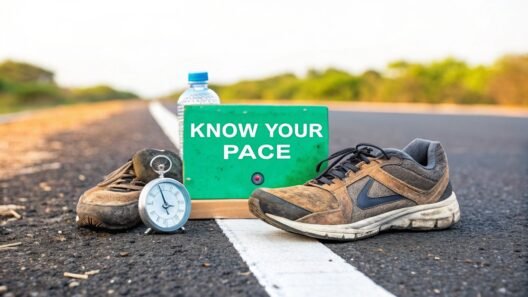When you have flat feet, finding the best running shoes isn't about loyalty to a single brand. It's about finding the right technology—specifically, features geared toward stability and motion control that gently correct overpronation.
The goal is to find a shoe with a firm midsole, a rock-solid heel counter, and often a "medial post" that helps guide your foot strike into a more neutral, efficient pattern. This is what separates a comfortable, injury-free run from a painful one.
Your Guide to Finding the Right Running Shoes

Walking into a running store can feel like a sensory overload, especially when you’re trying to solve a specific problem like flat feet. But here’s the secret: you don’t need to find one "perfect" shoe. You just need to understand the features that give your feet the support they're missing.
Think of your foot as the foundation of a building. If that foundation is unstable, the stress shoots right up the structure—through your ankles, shins, and even your knees.
For runners with flat feet, the main culprit is almost always overpronation, that excessive inward roll of the foot after it hits the ground. This is precisely what stability and motion control shoes are built to fix. They work like subtle guardrails, keeping your foot from veering off course. Getting this right isn't just about comfort; it's about preventing nagging injuries like shin splints and plantar fasciitis down the road.
Key Shoe Features for Flat Feet at a Glance
To cut through the marketing jargon, it pays to know what you're actually looking for. I've put together a quick summary of the essential design elements that provide the support runners with flat feet absolutely need.
This table breaks down the core technologies you'll find in a good stability shoe. Understanding these will help you see past the flashy colors and focus on the engineering that matters.
| Feature | What It Does | Why It's Critical for Flat Feet |
|---|---|---|
| Stability or Motion Control | Limits the excessive inward rolling of the foot (overpronation). | Directly counteracts the main biomechanical issue tied to flat feet, promoting better alignment. |
| Firm Midsole (Medial Post) | Uses denser foam on the inner side of the shoe to stop the arch from collapsing. | Acts like a supportive wedge, propping up the arch so it doesn't flatten out under pressure. |
| Supportive Heel Counter | A rigid plastic insert that cups and stabilizes the heel. | Locks your heel in place to stop it from wobbling, a common problem for overpronators. |
| Wide, Stable Base | The outsole and midsole are built on a broader platform. | Creates a more stable foundation for landing, much like how a wide base keeps a tower from falling. |
| Moderate Cushioning | Absorbs impact without feeling overly soft or mushy. | Protects your joints from the constant pounding of running while remaining firm enough for support. |
As you can see, these features aren't just thrown in randomly; they work together as a complete system to create a stable ride. This focus on biomechanics is a huge driver of innovation in the footwear industry.
It's a big market, too. The global running shoe industry was valued at roughly $14.68 billion in 2022 and is expected to climb to $21.89 billion by 2033. That growth is fueled by a better understanding of running science and the demand for smarter shoe designs, especially for runners who need extra support.
Armed with this knowledge, you can walk into your next shoe fitting with confidence. You’ll be able to spot the features that will actually help you, leading to a much more comfortable and enjoyable time out on the road. For more tips, check out our guides covering all things running.
Why Your Flat Feet Need the Right Kind of Shoe
Think of a healthy foot arch as your body's built-in suspension system. It's a beautifully designed spring that's meant to do two jobs: absorb the shock every time your foot hits the ground and spread your body weight out evenly. It’s nature’s perfect shock absorber.
But when you have flat feet, or what some people call "fallen arches," that natural spring is gone. The arch collapses, and instead of absorbing the impact, your foot flattens out completely. This single event triggers a whole cascade of problems that work their way up your body.
The Problem Isn't Just Your Feet—It's Overpronation
With no arch to prop it up from the inside, your foot looks for stability elsewhere. The most common compensation is rolling too far inward with each step. We call this overpronation. This isn't just a minor wobble; it's a significant inward collapse that throws your ankle, shin, and even your knee out of alignment.
It's a bit like driving a car with a bad alignment. You'll notice the tires wearing out unevenly, the car pulling to one side—the whole ride just feels off and unstable. Overpronation does the same thing to your body. It creates an unstable foundation that sends shockwaves of stress right up your legs. This is the real reason why so many runners with flat feet battle injuries like shin splints, Achilles tendinitis, and runner's knee.
This is a structural problem, which is why just grabbing a shoe with more cushioning won't fix it. A soft, squishy shoe might feel nice for a moment, but it does nothing to correct the underlying instability. You need a shoe built to address the cause, not just the symptom.
How a Good Stability Shoe Can Help
This is where stability and motion control shoes come in. They are engineered from the ground up to counteract the effects of a collapsed arch. They’re designed to be a biomechanical fix that guides your foot back toward a more neutral, efficient stride.
A supportive running shoe essentially acts as an external arch. It’s not there to force your foot into a new shape, but to give you the stable platform your own foot structure is missing. It works with your foot to encourage better alignment.
These shoes use some clever tech to get the job done. Don't think of them as a fluffy pillow, but more like a supportive rail that keeps your stride on the right track.
- They stop the collapse: Most use firmer foam or plastic inserts on the inside of the midsole. This acts as a wedge, preventing your arch from completely flattening on impact.
- They guide your foot: Features like strong heel counters and guide rails work like bumpers in a bowling lane, keeping your foot from rolling too far inward.
- They create a stable base: A wider platform underfoot gives you a more solid surface to land on, cutting down on the wobble that can lead to strain.
This isn't a niche problem, either. It’s estimated that flat feet affect somewhere between 20-30% of the population, so shoe companies have invested heavily in creating solutions. The entire category of "stability shoes" was born from the need to manage this common inward-rolling motion. You can find more insights on how running shoes are designed for flat feet and stability.
In the end, finding the best running shoe for your flat feet is about more than just immediate comfort. It's about building a solid foundation that protects your entire body from the wear and tear of running, so you can stay out there doing what you love, pain-free.
Understanding Essential Shoe Technologies
Shopping for running shoes when you have flat feet can feel like you need an engineering degree. Brands love to throw around technical terms like "medial post," "GuideRails," and "heel counter," but what does any of that actually mean for your run?
Let's cut through the marketing jargon. Think of these features as a specialized support crew for your feet. Each one has a specific job, working together to counter the effects of a collapsed arch and guide you toward a smoother, more stable stride.
The Core of Support: Medial Posts and Wider Midsoles
The midsole is the heart of a running shoe, and for anyone with flat feet, its design is everything. One of the oldest and still most effective technologies is the medial post. This is just a fancy term for a section of firmer, denser foam placed on the inner side of the shoe, right under your arch.
Imagine your arch is a bridge that wants to sag. The medial post acts like a sturdy support pillar, preventing that collapse. As your foot lands and starts to roll inward (overpronate), it pushes against this firmer material, which gently brakes the excessive motion.
Another deceptively simple feature is a wider midsole. A shoe built on a broader platform is just naturally more stable. It’s like how a skyscraper needs a wide foundation to avoid swaying. This wider base gives your foot more ground to stand on, reducing the side-to-side wobble that often plagues runners with flat feet.
Guiding Your Stride: Heel Counters and GuideRails
While the midsole provides the foundational support, other features focus on guiding your foot and ankle into a better alignment. A firm heel counter—that rigid plastic insert wrapped around the back of your heel—is critical. Its job is to cup your heel and lock it in place, stopping it from sliding around on impact. This rear-foot stability is a game-changer for maintaining proper alignment all the way up your leg.
Some brands have evolved this concept into more dynamic systems, like the GuideRails technology from Brooks Running.
Think of GuideRails as bumpers on a bowling lane, but for your feet. They aren’t constantly forcing your foot into a certain position. Instead, they only engage when your foot or knee starts to stray from its natural path, gently nudging you back into alignment.
This approach offers a less intrusive kind of support, providing stability only when you actually need it. The infographic below really brings home how interconnected these forces are—showing how a collapsing arch leads to overpronation, which can send stress right up to your knees.

Once you grasp this chain reaction, you can truly appreciate why these shoe technologies are so vital for keeping runners healthy and on the road.
Stability vs Motion Control Shoes
All these technologies are typically packaged into two main categories of supportive running shoes: stability and motion control. Understanding the difference is crucial for getting the right level of support without overcorrecting.
Stability shoes, which are designed for the majority of runners with flat feet, use features like medial posts and wider platforms to gently curb overpronation. As running's popularity has soared, the demand for these supportive shoes has grown significantly. You can discover more running shoe statistics that highlight just how essential this category has become.
To make it simple, here’s a direct comparison to help you figure out which type is right for you.
| Feature | Stability Shoes | Motion Control Shoes |
|---|---|---|
| Ideal For | Mild to moderate overpronation. | Severe overpronation and very flat feet. |
| Primary Goal | To provide moderate guidance and support. | To provide maximum control and limit foot motion. |
| Key Technology | Often uses dual-density midsoles and guide rail systems. | Typically features very firm medial posts and rigid construction. |
| Feel & Flexibility | More flexible and lighter than motion control shoes. | Stiffer, heavier, and less flexible for ultimate support. |
| Who Should Use It | The majority of runners with flat feet. | Runners who need the highest level of correction. |
For most runners, a stability shoe hits that sweet spot of support and flexibility. But if your arches are extremely low and you overpronate significantly, a motion control shoe might be what you need to give your feet the robust structure required to run comfortably and safely.
How to Find Your Perfect Fit in the Store

Knowing all the tech specs for a great stability shoe is a good start. But turning that knowledge into a perfect fit, right there in the store, is where the magic really happens. A shoe that looks perfect on paper can still lead to a world of pain and blisters if the sizing is off.
Think of it this way: you’re not just buying a shoe in your standard size. You're finding a piece of equipment that needs to feel like a natural extension of your foot. This hands-on process is your last line of defense against a costly mistake, ensuring the stability features you need actually match your unique foot shape.
Nail the Three Key Fit Points
A perfect fit is a trifecta—it's not just about length. You need to hit a balance across three critical areas, especially when your feet need that extra bit of support.
1. The "Rule of Thumb" for Length
You should always have about a half-inch of space—roughly the width of your thumb—between your longest toe and the very end of the shoe. It might feel a bit long at first, but your feet swell and expand forward during a run. Without that buffer, you’re just asking for bruised toenails.
2. A Secure Midfoot Lock-Down
The midfoot is where the shoe’s support system really gets to work. You're looking for a snug, secure feeling here, but without any pinching or uncomfortable pressure. When the midfoot is locked down properly, your foot won't slide around, which allows all those stability features to guide your stride like they're supposed to.
3. Ample Room in the Toebox
Your toes need room to spread out and splay naturally every time your foot hits the ground. A cramped toebox is a fast track to problems like bunions or Morton's neuroma. Make sure you can wiggle your toes freely without them bumping up against the sides of the shoe.
Time Your Shopping Trip and Come Prepared
Believe it or not, when you try on shoes can be just as important as how you try them on. A few simple tricks can help you get the most accurate fit.
Shop in the Afternoon or Evening: Feet naturally swell throughout the day. By trying on shoes later in the day, you’re fitting them to your feet at their largest, which is exactly how they'll be mid-run.
Bring Your Gear: Don't just show up in any old socks. Always bring the specific socks you run in, since their thickness can drastically change the fit. And if you use custom or over-the-counter orthotics, bring those, too. You have to test the entire system together.
The shoe must work with your whole setup. Testing a shoe without the orthotics you plan to use is like test-driving a car without adjusting the seat—you just won't get a true feel for how it will perform when it counts.
Put the Shoes to the Test
You wouldn't buy a car without taking it for a spin, right? The same goes for running shoes. How a shoe feels standing still can be completely different from how it feels in motion.
Perform an In-Store Gait Check
Before you even head to the store, it's a good idea to get a baseline for your foot type. The classic "wet test" is a super easy way to do this. Just get the bottom of your foot wet and step onto a piece of cardboard.
- A footprint that shows your entire foot with almost no curve on the inside points to flat feet and likely overpronation.
- A print showing only the ball and heel of your foot suggests a high arch.
- A print with a clear, distinct curve along the inside is typical of a neutral arch.
Once you’re in the store with a shoe on, don't just stand there and look in the mirror. Jog around the shop a bit, or better yet, hop on their treadmill for a few minutes. Pay close attention. Does your heel slip? Do you feel any rubbing or pinching anywhere? This is your chance to spot a deal-breaker before it has a chance to ruin your next run.
When to Consider Orthotics and Strengthening Exercises
https://www.youtube.com/embed/qnz_ExktsG0
Even the absolute best running shoes for flat feet are only part of the solution. Think of them as giving you incredible passive support—a well-designed platform that helps hold your foot in a better position while you run. But for real, long-term improvement, you need to build active support from the inside out.
This is where orthotics and strengthening exercises enter the picture. They work together with your shoes to create a complete support system, tackling both the symptoms and the root causes of weak arches. When you combine these tools, you stop relying solely on the shoe and start teaching your body how to support itself more effectively.
Insoles vs. Custom Orthotics: What's the Difference?
The word "insole" gets thrown around a lot, but it can mean two very different things. Nailing down the distinction is the first step to figuring out what you actually need.
Over-the-counter (OTC) insoles are what you'll find in most running stores or pharmacies. They offer a good, general boost in arch support and cushioning. It's a bit like buying reading glasses off the rack; they provide a helpful, non-specific fix that works great for many people with mild or moderate pronation. They're an excellent starting point for adding a little more structure to your shoes.
Custom orthotics, however, are a whole different ballgame. These are medical devices prescribed by a podiatrist after a thorough analysis of your gait and foot mechanics. They are molded precisely to your individual foot, designed to correct significant biomechanical issues with a level of targeted support an off-the-shelf product just can't replicate.
The key idea is this: A good stability shoe gives you a solid foundation. An orthotic acts like a custom adapter between your foot and that foundation, dialing in the support to meet your specific needs.
Building a Stronger Foundation with Exercises
While shoes and orthotics provide external help, targeted exercises build internal strength. It's the difference between propping up a flimsy wall and actually reinforcing its structure. By strengthening the muscles in your feet and lower legs, you improve your body's natural ability to maintain an arch and absorb impact.
Over time, this active support makes you a more resilient and efficient runner, dramatically cutting down your injury risk. It’s a proactive strategy that pays off big time, especially as you start logging more miles. This is a crucial piece of the puzzle for anyone following a training program, like our complete running schedule for beginners.
Here are a few powerful, easy-to-do exercises to get started:
- Towel Curls: Sit down and place a towel on the floor under your foot. Using only your toes, scrunch and pull the towel toward you. This is fantastic for targeting those small, intrinsic foot muscles.
- Calf Raises: Stand flat on the ground and slowly lift your heels up, pausing at the top before lowering back down. This builds strength in your calves and Achilles tendon—both critical for supporting your arch.
- Arch Lifts (Short Foot Exercise): Keeping your heel and toes planted, try to lift the arch of your foot up toward the ceiling. You're directly firing up the muscles that hold your midfoot stable.
Weaving these simple routines into your week helps build a more powerful and resilient foundation. This kind of holistic approach is gaining traction, and it’s one reason why the global athletic footwear market is expected to hit $113.39 billion by 2029. There’s a growing awareness that addressing conditions like flat feet requires more than just a shoe. You can read more about these running shoe market trends to see how a focus on foot health is changing the entire industry.
Your Pre-Purchase Checklist for Running Shoes
Alright, you've done your homework. You know the difference between overpronation and a neutral gait, and you understand what your flat feet actually need to feel good on a run. Now for the fun part: putting that knowledge to the test in the real world.
Think of this as your final pre-flight check before you commit. This isn't about finding a shoe that just feels "okay" in the store; it's about finding the right piece of equipment that will protect you mile after mile. Let's cut through the marketing noise and focus on what really matters.
The In-Store Final Check
Before you even think about heading to the register, take a few minutes to run through these five critical checkpoints. This quick hands-on evaluation will tell you everything you need to know about a shoe’s stability, structure, and fit.
Confirm the Shoe Category
First things first, check the box or the shoe's description. Does it say Stability or Motion Control? This is the most important filter. If it's a "Neutral" shoe, you can put it right back on the shelf—it simply won't have the internal structure your arches need.Feel for a Firm Heel Counter
Grab the back of the shoe and give it a good squeeze. It should feel solid and structured, not flimsy or collapsible. A strong heel counter is non-negotiable; it's what anchors your foot and prevents that side-to-side wobble that can throw your whole stride out of whack.Inspect the Midsole for a Medial Post
Now, look at the inside of the shoe's midsole, right under your arch. Do you see a section of foam that’s a different color or looks a lot denser than the rest? That’s the medial post. It's the key technology that acts like a wedge to stop your foot from rolling too far inward.Verify the Fit and Space
Once the shoe is on, stand up and make sure you have about a thumb's width of space between your longest toe and the very end of the shoe. Your midfoot should feel secure, but your toes need room to spread out. If they’re crammed in there, you’re asking for trouble.
A shoe that feels perfect while you're just standing can become a torture device a few miles into a run. You have to test it in motion.
- Take Them for a Test Run
This is the most crucial step, so don't skip it. A good running store will have a treadmill or let you jog around for a minute. How does it actually feel when you move? Pay close attention to any rubbing, heel slippage, or just general awkwardness. This is your last chance to spot a deal-breaker before you hit the pavement.
Your Top Questions Answered
Even after you've got the basics down, a few specific questions always seem to pop up when you're zeroing in on the right pair of shoes. Let's tackle some of the most common ones we hear from runners with flat feet.
Can I Put My Custom Orthotics in Neutral Running Shoes?
This is a classic question, and the answer is almost always no. It seems like it should work, right? A custom insert in a neutral shoe. But in reality, this combo can make your run feel wobbly and unstable.
Think of it this way: a stability shoe is a complete support system. It has a solid heel counter, a broader footprint, and that all-important dense foam on the inside edge. All these parts work together. When you drop a supportive orthotic into a plush, flexible neutral shoe, you can actually overcorrect the problem, pushing your foot too far to the outside. That just trades one problem for another. It’s best to use your orthotics with the type of shoe your podiatrist recommended.
How Often Do I Need to Replace My Stability Shoes?
Running shoes don't last forever, especially when you rely on their support features. The industry standard is to swap them out every 300 to 500 miles.
But that's just a guideline. If you're a heavier runner, you'll likely wear down that supportive foam closer to the 300-mile mark. Lighter runners might push them a bit further. The best way to know is to listen to your body and look at the shoes. Does the cushioning feel flat and lifeless? Is the tread on the bottom worn smooth? Are new little aches and pains starting to creep in? Those are all signs that it's time for a fresh pair. Pushing your luck with worn-out shoes is one of the easiest ways to get injured.
The foam in your shoe's midsole is doing the heavy lifting—providing both cushioning and crucial support. Once that foam gets permanently compressed, it can't bounce back, and the shoe is no longer protecting your joints or guiding your stride properly.
Are Minimalist or Zero-Drop Shoes a Good Idea for Me?
For the vast majority of runners with significant overpronation, minimalist and zero-drop shoes are not a good choice. These styles are built to simulate barefoot running, which means they offer next to nothing in terms of arch support or motion control.
Without the structure of a medial post or a firm heel, your arches are left unsupported, which can make overpronation even worse. This puts a ton of extra strain on your shins, knees, and ankles. When you're logging serious mileage, that support becomes even more critical. If you're building up to a new race distance, check out our guide on how many miles are in a half marathon to understand the demands you'll be facing.
Should I Get Different Shoes for Trails and Roads?
Yes, absolutely. They’re two different tools for two very different jobs. Road shoes are designed for the consistent, hard-pounding rhythm of pavement. They focus on lightweight cushioning and predictable stability.
Trail shoes, however, are built for the wild. They’re designed to tackle dirt, mud, rocks, and roots with features like:
- Deep, aggressive lugs on the outsole for serious grip.
- Protective rock plates sandwiched in the midsole to shield your feet from sharp objects.
- Tough, reinforced uppers that can handle scrapes from branches and debris.
You can definitely find trail shoes with stability features, but you'll need to seek them out specifically. They are engineered to provide support on constantly shifting, uneven ground—a completely different challenge than the road.
At THE RUNNING, we provide expert guides and training plans to help you become a stronger, healthier runner, no matter your foot type. Discover everything you need for your running journey.









